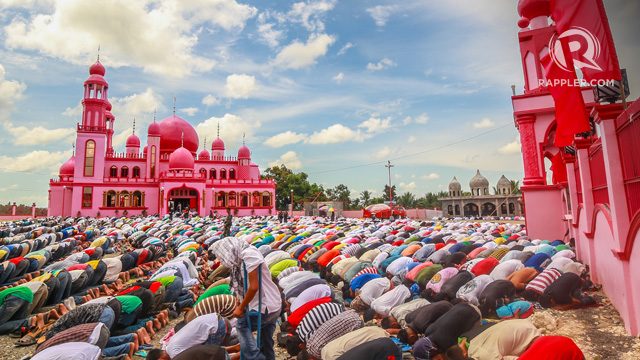SUMMARY
This is AI generated summarization, which may have errors. For context, always refer to the full article.

MANILA, Philippines – Even before the arrival of Spanish colonizers and Roman Catholicism in the Philippines, Islam was already present in the country. Introduced by Muslim traders in southern Philippines in the 14th century, Islam’s influence had once spread north to Manila.
Many centuries later, Islam continues to be an integral part of Philippine history and culture.
Islam is the Philippines’ second largest religion, with followers of 5,127,084 as of 2010, according to the National Statistics Office (NSO). In a span of 10 years, it increased by close to one-third or 32.7%, from 3,862,409 in 2000.
Majority of Filipino Muslims live in the Mindanao island group, with at least 4,838,060 Muslims there, or 94% of the country’s Islamic population.
Within Mindanao is the Autonomous Region in Muslim Mindanao (ARMM), composed of the provinces of Basilan, Lanao del Sur, Maguindanao, Sulu, and Tawi-Tawi, but excluding Isabela City in Basilan and Cotabato City in Maguindanao. (READ: How different is ARMM from the Bangsamoro?)
The ARMM is home to at least 2,979,814 Muslims, or 58% of the country’s Muslim population.
In Metro Manila, only at least 105,094 Muslims live there, making up only 2% of the country’s Muslim population, and a miniscule 0.89% of the Metro’s entire population. On the map below, Metro Manila has a faint yellow shade (zoom in to see it more clearly).
Click on the other provinces for more information on the Muslim population of each one. You may also change views by clicking on the legends above the map.
The 5 ARMM provinces figure at the top of the list of provinces with the most Islam adherents in the Philippines. (READ: Beautiful mosques in the Philippines)
| Province | Muslim Population (2010) | % of PH’s Muslim Pop. |
| 1. Maguindanao (including Cotabato City*) |
993,040 | 19.37% |
| 2. Lanao del Sur | 872,678 | 17.02% |
| 3. Sulu | 706,229 | 13.77% |
| 4. Tawi-Tawi | 353,865 | 6.90% |
| 5. Zamboanga del Sur | 336,840 | 6.57% |
| 6. Cotabato | 318,602 | 6.21% |
| 7. Basilan (including Isabela City**) |
311,004 | 6.07% |
| 8. Lanao del Norte | 285,861 | 5.58% |
| 9. Sultan Kudarat | 209,917 | 4.09% |
| 10. Metro Manila (not a province) |
105,094 | 2.05% |
|
Source: 2010 Census, NSO * Cotabato City, part of Region XII, has a Muslim population of 200,370. |
||
Islam is the dominant religion in only the 5 ARMM provinces, with Sulu and Tawi-Tawi having the biggest percentage of Muslims composing their respective populations.
But Islam has a strong presence in ARMM’s surrounding provinces as well.
| Province | Muslim Population (2010) | % of Province’s Pop. |
| 1. Sulu | 706,229 | 98.32% |
| 2. Tawi-Tawi | 353,865 | 96.83% |
| 3. Lanao del Sur | 872,678 | 94.00% |
| 4. Maguindanao (including Cotabato City*) |
993,040 | 81.73% |
| 5. Basilan (including Isabela City**) |
311,004 | 79.56% |
| 6. Lanao del Norte | 285,861 | 30.80% |
| 7. Sultan Kudarat | 209,917 | 28.13% |
| 8. Cotabato | 318,602 | 26.02% |
| 9. Zamboanga del Sur | 336,840 | 19.13% |
| 10. Zamboanga Sibugay | 84,835 | 14.53% |
|
Source: 2010 Census, NSO * Cotabato City, part of Region XII, has a Muslim population of 200,370.** Isabela City, part of Region IX, has a Muslim population of 56,632. |
||
See Rappler’s previous maps on other major religions in the country:
– Rappler.com
Add a comment
How does this make you feel?
There are no comments yet. Add your comment to start the conversation.